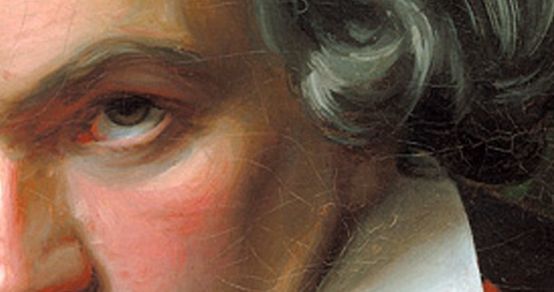"Appassionata
Every Friday, Beethoven is here. To mark the 250th anniversary of Beethoven's birth, each week the Swiss Music Review takes a look at a different work from his catalog. Today, it's the Piano Sonata No. 23 in F minor.

Exactly where Beethoven ran - or took a stagecoach - with the manuscript of his piano sonata in the apparently heavy rain will probably always remain a mystery. Was it in Troppau (Opava) in Moravia, after leaving Grätz Castle in a hurry and in anger following an argument with Prince Lichnowsky that had touched his pride? At least, that's what Theodor von Frimmel reports, referring to the recollections of physician Anton Weiser, who was present at the table. Or was it during the following trip to Vienna, when the water simply got into his travel bag, as Paul Bigot de Morogues, Prince Rasumowsky's librarian, noted on a printed edition of the work many years later? Beethoven then "laughingly showed his still completely wet work" to pianist Marie Bigot, who played the soaked score. According to the other version, the sonata (and thus its musical character) arose from a scene in which aristocratic pride and artistic free will clashed. Whether Beethoven actually wrote a letter the next day to the Prince of Troppau, his patron, is debatable. The following statement, perhaps transmitted only in spirit, reflects (as does the anecdote between Mozart and Joseph II, also in the 19th century) the insurmountable gap between rank and talent: "Prince! What you are, you are by chance and birth; what I am, I am because of me. There have been princes, and there will be thousands more. But there is only one Beethoven.
In this context, the nickname "Appassionata" for the Sonata in F minor Op. 57 could not have been better chosen: the characters of the first and last movements are passionate, stormy. In the first movement especially, the barely completed theme shakes the entire form with its impulsive momentum, as do the virtuoso cascades through the entire ambitus of the finale. The work was not particularly popular at first. Perhaps because Beethoven had used fairly neutral tempo indications (Allegro assai, Andante con moto and Allegro ma non troppo). As is so often the case, it only met with success after the addition of a posthumous mention: the designation "Sonata appassionata" first appeared in 1838 on the title page of a four-hand arrangement (!) published by Cranz in Hamburg, and was soon welcomed by other publishers. This romantic epithet never pleased Carl Czerny, however, for in his eyes, the sonata was "too grandiose" in itself.
For those who need convincing of the water damage in the autograph, the facsimile can be viewed online on the pages of the Bibliothèque nationale de France.
Aufnahme auf idagio
Keeping in touch
A weekly newsletter reveals the latest column on line. You can subscribe by entering your e-mail address below, or by subscribing to our RSS feed.








